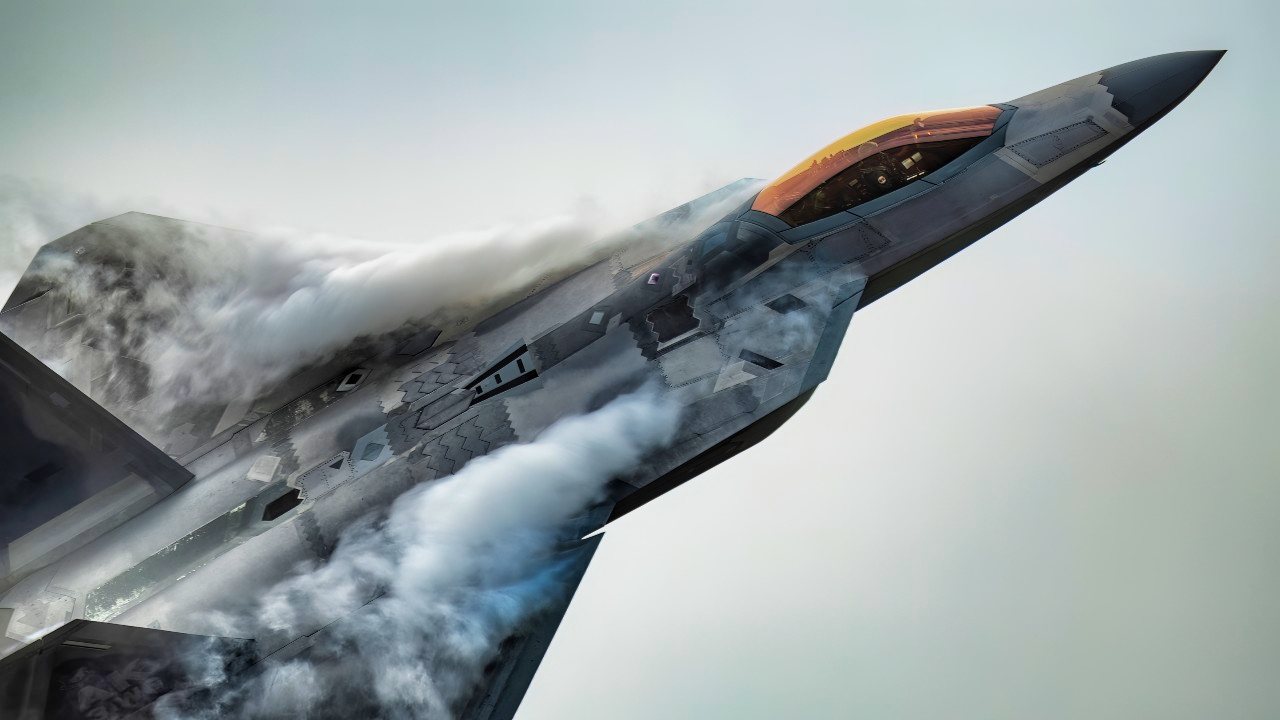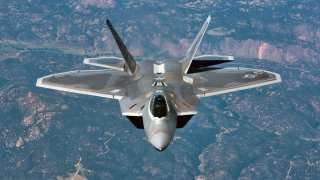The U.S. Air Force's F-22 Raptor Nightmare Is Just Getting Started
The F-22 Raptor, a cornerstone of U.S. Air Force stealth capability, is recognized for its advanced sensors, agility, and stealth characteristics that provide unparalleled air superiority.
Summary: The F-22 Raptor, a cornerstone of U.S. Air Force stealth capability, is recognized for its advanced sensors, agility, and stealth characteristics that provide unparalleled air superiority.
-Equipped with cutting-edge weaponry, including AIM-120 AMRAAMs and AIM-9 Sidewinders, and an M61A2 cannon, the F-22 excels in both long-range engagements and close-quarters combat. Despite its prowess, the F-22's production ceased in 2011 after 186 units, with operational numbers now below 100 due to maintenance challenges.
-As it approaches the end of its service life, the Air Force is preparing for its replacement with the Next Generation Air Dominance (NGAD) program, aiming to introduce a sixth-generation fighter with enhanced capabilities by the early 2030s.
The F-22 Raptor: From Dominance to Replacement in U.S. Air Superiority
The U.S. Air Force takes great pride in the stealth aircraft it fields. At the top of that list is the F-22 Raptor, which first became operational in 2005.
An air superiority multirole fighter jet, the F-22 Raptor combines stealth, agility, and advanced sensors to create one of the most advanced aircraft of all time.
A Powerful Fighter Jet
What makes the F-22 Raptor especially deadly is the combination of sensors, avionics, stealth, and munitions that create the conditions for first-kill opportunities. In an air-to-air configuration, the F-22 Raptor can carry six AIM-120 AMRAAM radio-guided missiles and two AIM-9 Sidewinder heat-seeking missiles. The F-22 Raptor can take out targets from distance before the adversary even knows it’s there.
But the F-22 Raptor is also deadly in close quarters. It packs an M61A2 20mm cannon with 480 rounds and is extremely agile due to its two-dimensional thrust vectoring capabilities and high thrust-to-weight ratio. A true acrobat of the skies, the F-22 Raptor can change direction mid-air and gain an upper hand over an adversary during a dogfight. Due to its powerful engines, the fighter jet can also fly well at high altitudes and has an operational ceiling of 65,000 feet.
The F-22 Raptor can fly approximately 1,000 miles with its internal fuel tanks, and about 1,900 miles with two external wing fuel tanks. (These fuel tanks, however, reduce the aircraft’s stealth and hinder it in dogfighting.) The aircraft can reach speeds of Mach 2 and supercruise – fly at supersonic speeds without using afterburners.
The F-22 Raptor Nightmare Begins
Unfortunately, the F-22 Raptor is nearing its end. Lockheed Martin shut down the fighter jet’s assembly line in December 2011 in order to switch its attention to the F-35 Lightning II. From roughly 2005 to 2011, the Air Force received 186 F-22 Raptors. Years of operations and a closed production line have dwindled the number of operational aircraft to less than 100.
Maintaining F-22 Raptors is a tough task. The Air Force spent five years fixing a single aircraft so it could return to duty after suffering a critical malfunction during takeoff in 2018.
“There are only so many F-22s in the inventory,” Air Force Chief Master Sgt. Adam Willeford, the 3rd Aircraft Maintenance Squadron senior enlisted leader, said when discussing that aircraft. “We have a really distinct and important mission when it comes to fifth-generation aircraft and the power we project. Every aircraft in the fleet is highly valuable for mission success, so returning this one to operational status is a big win for the team.”

In 2022, the Air Force tried to retire about thirty F-22 Raptors. Congress not only shot down the idea, but mandated that the aircraft be updated as well.
The F-22 Raptor Heads to Retirement, Sort Of
The F-22 Raptor might be dying, but the Air Force is already working to replace the stealth fighter jet.
Under the Next Generation Air Dominance (NGAD) program, the Air Force is working with industry to design and produce a sixth-generation fighter jet that would revolutionize aviation and introduce several new or improved concepts, including uncrewed aerial wingmen and improved stealth.
The Air Force plans to procure around 200 NGAD aircraft to replace the F-22 Raptor. The Pentagon aims to select a design in 2024 and have an operational capability by the early 2030s.
But until the NGAD replacement is ready, the F-22 Raptor continues to serve in operational roles around the world, including missions on the borders of Russia and China.
About the Author
Stavros Atlamazoglou is a seasoned defense journalist specializing in special operations and a Hellenic Army veteran (national service with the 575th Marine Battalion and Army HQ). He holds a BA from the Johns Hopkins University and an MA from the Johns Hopkins’ School of Advanced International Studies (SAIS). His work has been featured in Business Insider, Sandboxx, and SOFREP.


